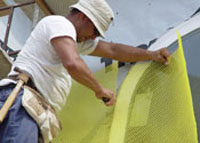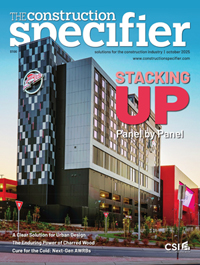Beyond color: Coatings that protect and perform

From high-profile to high-rise, monumental architectural buildings and top-tier commercial structures require the right protective coatings to ensure long-term performance and lasting curb appeal. Today’s high-performance protective coatings from leading manufacturers—including fluoropolymer-based powder and liquid formulations—are engineered to withstand the effects of UV exposure, heat, moisture, salt spray, and freezing temperatures. Providing a formidable barrier against these environmental elements is critical, as the stakes and expectations are high.
One of the most important jobs of architectural-grade metal coatings is to prevent the development of corrosion. According to the Association for Materials Protection and Performance (AMPP), corrosion alone costs the global economy more than $2.5 trillion annually. AMPP cites studies showing that implementing proven corrosion control practices could save up to 35 percent of these costs.
When it comes to a building’s long-term performance against corrosion, world-class protective coatings make a true difference. Plus, they offer longevity and cost efficiency while reducing energy consumption and maintenance needs. It is critical to specify coatings engineered for the specific substrate material, performance requirements and environmental exposure of a building. Careful consideration must be given to a coating’s resistance to corrosion, overall durability, color and gloss retention, and performance standards such as FGIA/AAMA 2605.
Protective performance is paramount, but architects and designers are also seeking modern innovations such as color-shifting pigments that change appearance based on light and angle. This empowers them to deliver dynamic designs with a single color formulation. These innovations allow for dynamic designs with a single color formulation and highlights a key role for paint manufacturers: collaborating with architects to meet precise aesthetic requirements, including the creation of custom colors, in the most efficient way possible.
Leading coatings manufacturers are delivering on all fronts. With advanced material science, their formulations permit architects to realize their design visions with coatings that offer increased durability, energy efficiency, and performance. These, in turn, satisfying the demands of building owners and developers. By understanding how these contemporary coating technologies differ from previous generations and reflect today’s architectural demands, specifiers can unleash more design freedom while meeting sustainability and building performance requirements.
A new era of paints and coatings
Architects are becoming more ambitious with their designs, committed to creating stunning structures that win awards and make a statement. Yet they must also adhere to 21st-century performance standards, meeting a host of environmental and building code demands.
Today’s architectural metal coatings must do more than create striking visuals. They play a fundamental role in structural integrity, energy efficiency, and environmental impact. Among the most advanced solutions available today are fluoropolymer-based powders and liquid coatings, recognized for their outstanding durability, weatherability, and design flexibility.
Fluoropolymer-based powders
For architects designing modern facades and high-performance building envelopes, fluoroethylene vinyl ether (FEVE-based) powder coatings offer a balance of long-term durability and color retention with sustainability advantages. These fluoropolymer solutions meet stringent standards such as FGIA/AAMA 2605 for applicability for architectural extrusions and aluminum components such as window frames, panels, and curtain walls.
To meet the FGIA/AAMA 2605 performance requirements, coatings must pass demanding laboratory testing that replicates years of exposure to challenging environmental conditions:
- Humidity resistance—Coatings are subjected to 4,000 hours of continuous humidity with minimal blistering.
- Cyclic corrosion testing—Coatings must endure 2,000 hours of cyclic wet and fog/dry testing with minimal evidence of corrosion.
- Chemical resistance—Coatings must resist degradation when exposed to harsh substances, including muriatic acid, nitric acid, mortar, detergents and window cleaners.
One of the most stringent requirements of the FGIA/AAMA 2605 standard is its real-world weathering performance. Coatings must demonstrate exceptional durability in the field after 10 years of continuous outdoor exposure in South Florida, a subtropical region known for its intense UV radiation and humidity. To comply, the coating must meet the following benchmarks:
- Color retention—Limited to a color shift of no more than five Delta E units.
- Chalk resistance—A minimum rating of eight for dark colors and six for white finishes.
- Gloss retention—At least 50 percent of the original gloss must be maintained.
- Erosion resistance—Less than 10 percent loss of coating thickness.
Next-generation fluoropolymer powders maintain color and gloss stability well beyond the typical five- to 10-year benchmark. In fact, third-party testing of these coatings from leading manufacturers has shown minimal degradation even after 12 years of high-UV exposure in South Florida. This superior performance makes them ideal for high-visibility architectural creations or signature structures that demand exceptional and long-lasting aesthetics.
Advanced fluoropolymer formulations permit architects to specify with more design freedom. Premier exterior grade FEVE powder coatings offer extended gloss ranges of five to 85 units, which allows for more versatility compared to standard FEVE powder coatings, which typically only offer gloss ranges of 25 to 75. These powders can also replicate anodized metal or natural materials and are applied with high-transfer efficiency that exceeds traditional FEVE powder coatings by more than 20 percent. The result is better material utilization and reduced waste for applicators.
From a sustainability perspective, architects can specify the most advanced FEVE powders because they are specifically formulated without chemicals that can present environmental and health concerns, including:
- Triglycidyl isocyanurate (TGIC)
- Perfluorooctanoic acid (PFOA)
- Fluorosurfactants
- Volatile organic compounds (VOCs)
- Hazardous air pollutants (HAPs)
- Living Building Challenge (LBC) Red List substances
- Substances of Very High Concern (SVHCs)
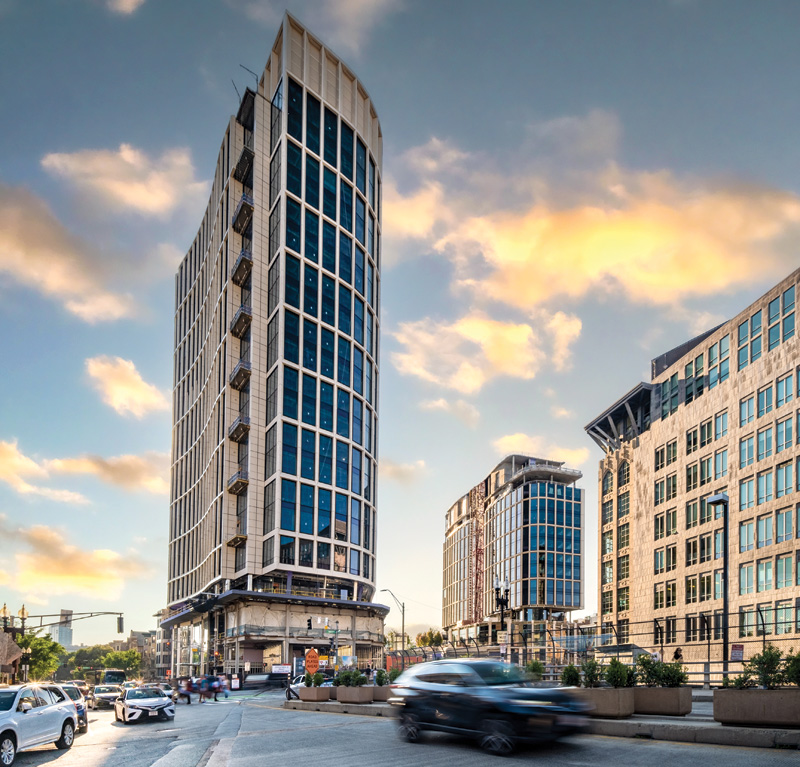
Case study: Lyrik Back Bay
The new Lyrik Back Bay development in Boston is a case study in the effectiveness of such coatings. This mixed-use development set a new benchmark for logistical complexity because it required building over the eight-lane Massachusetts Turnpike (I-90) and two Massachusetts Bay Transportation Authority (MBTA)/Amtrak rail lines. The location added intricacies for the coatings manufacturer and the metal finishing contractor.
The development includes CitizenM Boston Back Bay Hotel, tracking LEED certification, an underground parking facility, retail and restaurant spaces, and a European-style public plaza. Crews finished each building with a two-coat powder coating system formulated with high-performance FEVE resins. This was a crucial choice for the long-term performance of the buildings’ exteriors, which must endure weather extremes that range from harsh, snowy winters to hot, humid summers and temperature fluctuations in between.
Powder coatings are often the finish of choice for architectural applications due to an array of attractive features for specifiers and building owners. In fact, FEVE-based exterior-grade coatings have been used on architectural applications such as curtain walls, building facades, and extrusions for monumental buildings and commercial storefronts for more than 30 years.
Powder coatings were specified for Lyrik Back Bay because of their:
- Excellent mechanical properties, including hardness, scratch, and abrasion resistance
- Resistance to dirt pickup
- More uniform appearance regardless of orientation
- Thicker film build compared to most standard liquid coatings
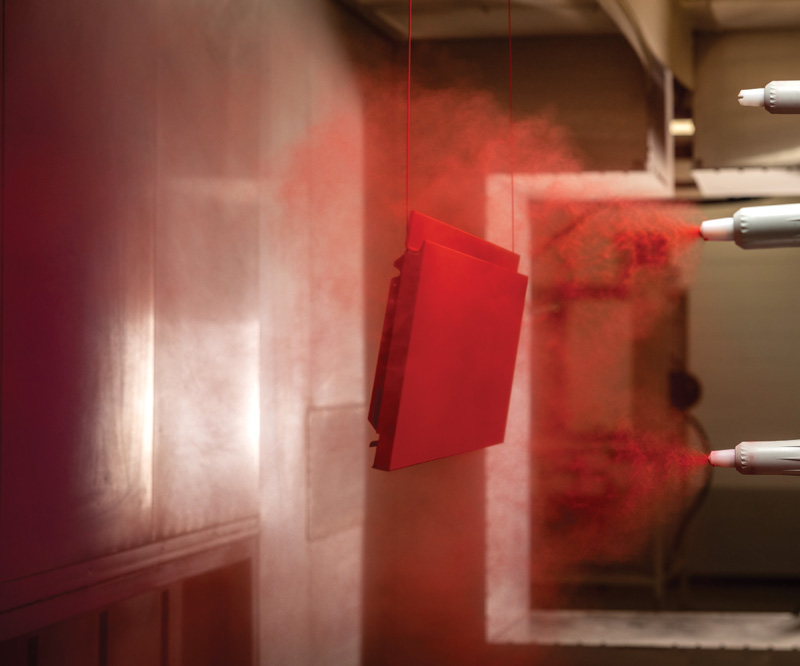
High-performance liquid coatings
In addition to powder coating technologies, architects and builders are choosing liquid coil- and extrusion-applied polyvinylidene fluoride (PVDF) fluoropolymer coatings for architectural metal finishing. Like powders, today’s PVDF liquid coatings offer a proven combination of aesthetics, durability, and environmental resilience.
Top-tier liquid coatings for architectural applications combine proprietary resins and pigment technologies with 70 percent fluoropolymer-based resins. These coatings offer a wide palette of special effects, glosses, and colors while meeting FGIA/AAMA 2605 specifications. They excel at combating the effects of weathering with optimal UV resistance and long-term color stability.
Used on metal substrates such as aluminum panels, curtain walls, roofs, and cladding systems, fluoropolymer liquid coatings also provide exceptional resistance to chalking, fading, corrosion, and chemical attack. This is true even in seacoast environments with high humidity and salty air.
Advancements have expanded the design potential for architects. Modern systems offer a vast palette of colors, gloss levels, and special effect finishes, including mica, metallic, and low-sheen variants.
With average temperatures climbing worldwide, it is more important than ever to consider the most up-to-date coating systems available. For example, cool coatings formulated with infrared (IR) reflective pigments are being specified with increasing frequency. These energy-efficient coatings lower energy demands for cooling by reducing heat absorption. They are especially critical in hot, sunny regions but are rising in popularity in all climate zones for their performance benefits.
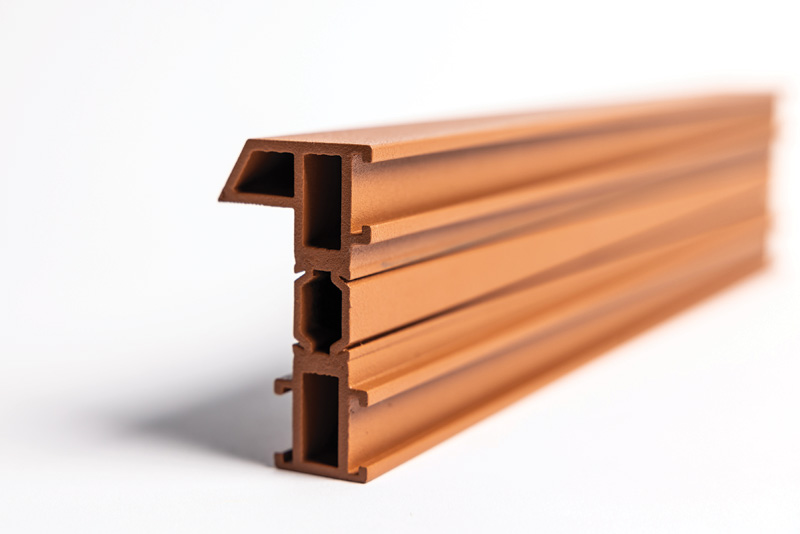
Case study: Allegiant Stadium
Cool coating technology was critical for Allegiant Stadium in Las Vegas, a state-of-the-art facility with a construction price tag of $1.9 billion. Construction of the 10-level fully domed venue posed significant challenges, including its sheer size at 167,225 m2 (1.8 million sf) and 25,401 tonnes (28,000 tons) of structural steel, plus its setting in the searing sun and heat of the Mojave Desert. The project required high-performance coatings technologies that could withstand the extreme weather and also match the signature colors of the home team. An added challenge was that one of their two main colors is black, which absorbs the most solar radiation from the sun.
Architects worked with a global leader in paints and coatings on advanced custom-color coatings infused with IR-reflective pigments that help cool the climate-controlled building using less energy. The coatings are formulated to achieve a higher degree of total solar reflective (TSR) value than standard protection exterior paints. This was critical to endure decades of heat and UV exposure while preserving the structural integrity of the stadium by reducing corrosion, warping, thermal expansion, and polymer degradation.
Ultimately, both fluoropolymer liquid and powder coatings support long-term building exterior performance with minimal maintenance. Their durability enables extended lifecycles for architectural metal surfaces, helping to reduce the frequency of recoating.
Design with confidence
Today’s architectural creations are becoming more daring, dynamic, and performance-driven than ever before.
By specifying advanced fluoropolymer powder and liquid coating systems that meet the highest performance standards, architects can meet the demands of modern architecture while balancing durability, sustainability, design freedom, and adherence to industry standards such as FGIA/AAMA 2605.
Leading building product manufacturers, architects, and specifiers have shifted the conversation around coatings. High-performance coatings are no longer an aesthetic afterthought but a critical design decision that plays a vital role in a structure’s performance across its lifetime. As chemistries such as fluoropolymer powder and liquid coatings deliver desired performance and aesthetics on an escalating scale, so does the opportunity to design more boldly than ever before.
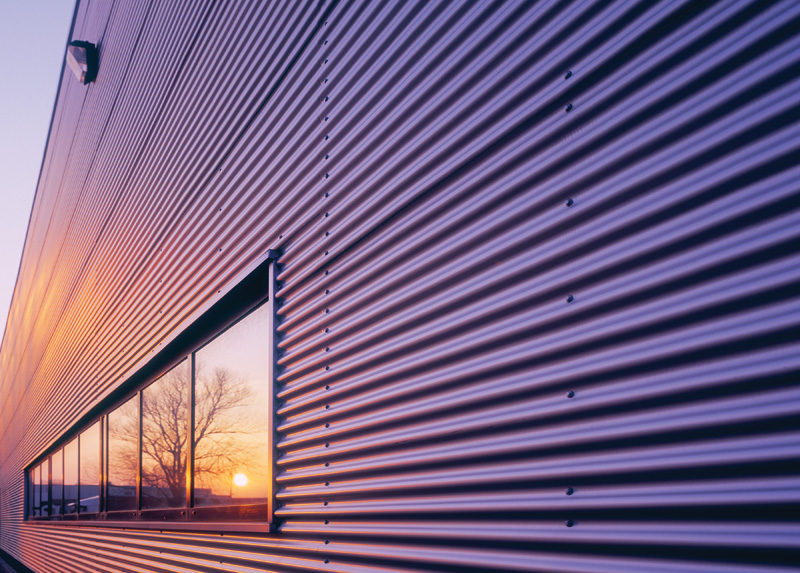
Author
Gary Edgar is the national architectural specification manager for PPG’s building products in North America, which includes factory applied PPG DURANAR liquid coatings and PPG CORAFLON PLATINUM powder coating. He has been with PPG for 27 years, with 18 years devoted exclusively to Air-Dry Fluoropolymer coating systems. Edgar is an active member of industry associations including, AEC, FGIA, AAMP, and MCA. His responsibilities include product and specification recommendations, application recommendations, along with product training to the specification community. He is also responsible for PPG’s coil, extrusion (powder/liquid) and ADS warranty approval and is an AAMP/NACE certified coating inspector.
Key Takeaways
High-profile architectural structures require effective protective coatings for long-term performance and curb appeal. High-performance options such as fluoropolymer-based powders and liquid coatings are designed to withstand UV exposure, heat, moisture, and freezing temperatures. Technologies such as cool coatings are essential for managing energy demands in hot, arid regions. Key considerations for architects include corrosion
resistance, UV durability, color retention, and adherence to standards such as FGIA/AAMA 2605. Innovations like color-shifting pigments enable multifaceted designs with single formulations. Understanding these technologies allows specifiers to achieve design freedom while aligning with sustainability and performance needs.



